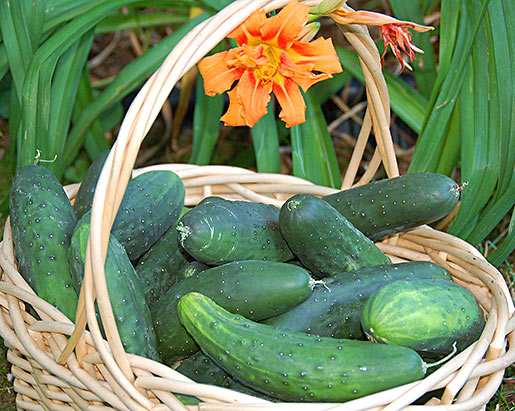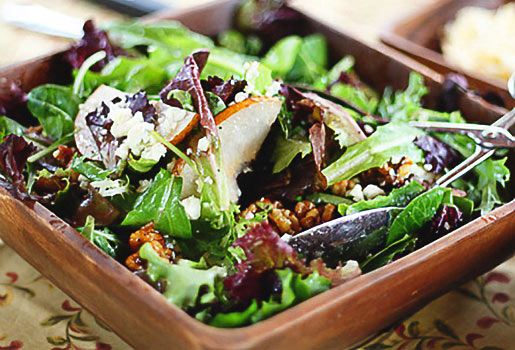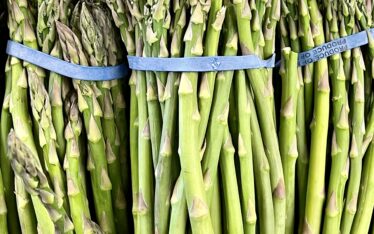 Ever found yourself in a Holiday Rut? I recently had a holiday epiphany while listening to a client talk about her Thanksgiving. She was tired of making the traditional Thanksgiving meal and decided instead to serve an ethnic food from her country — a large stew, with rice on the side. This was easier for her to cook and although she gave her guests a heads up about the menu change, they all showed up and enjoyed their holiday together.
Ever found yourself in a Holiday Rut? I recently had a holiday epiphany while listening to a client talk about her Thanksgiving. She was tired of making the traditional Thanksgiving meal and decided instead to serve an ethnic food from her country — a large stew, with rice on the side. This was easier for her to cook and although she gave her guests a heads up about the menu change, they all showed up and enjoyed their holiday together.
Could it be that I am a food coach and have never suggested to anyone that they change their Thanksgiving menu? The fact is, I host Thanksgiving every year for a large crowd and have never changed my menu. Small changes yes but a whole different meal, sans Turkey and all the trimmings?
Holiday traditions are important to many of us but if we really think about what makes our holiday special, the food or any one single thing is likely not what defines it. I conducted a focus group with my kids to test this theory.
My focus group informed me that my theory is wrong and that the food ranks very highly… they look forward to the food and to the leftovers. I didn’t like these results so I tried mapping it out with them.
With a different menu can you still: Play football in the morning? Yes. Spend time with favorite cousins? Yes. Have a long weekend off from school? Yes. Make the “gobble call” (assigning a guest to say Grace before the meal)? Yes. Eat delicious food? Yes… but the food is different.
People naturally resist change but don’t let that be an obstacle that prevents you from reinventing your holiday. Holidays should not be all about meeting expectations. You just need to proactively manage expectations by doing a little work up front to obtain buy-in from your “stakeholders”.
As we head into the next batch of holidays bear in mind that we aren’t constrained to cook the same foods, buy the same gifts, or be in the same place every year. We can choose to joyously inhabit these constraints or choose to unshackle ourselves with a little creative thinking… thinking outside the bird!
If you’re in a holiday rut, think about what changes you could make that would be the most impactful. Take the parts of the holiday that feel the most special and try putting them in a new format or a new venue. In the name of managing expectations, open a discussion about next year’s Holidays this year – that gives everyone a whole year to get used the idea!
From my family to yours, wishing you a FUN and restorative Holiday season.
Food Focus: Getting Back to Your Roots
 Winter is here and it’s time to go back to your roots… your root vegetables that is! When the weather gets colder we naturally gravitate toward more cooked foods, which impart a warming property to our bodies. If we focus on eating more seasonally, eating more in harmony with our natural environment, we find ourselves relying more heavily on the hearty root vegetables.
Winter is here and it’s time to go back to your roots… your root vegetables that is! When the weather gets colder we naturally gravitate toward more cooked foods, which impart a warming property to our bodies. If we focus on eating more seasonally, eating more in harmony with our natural environment, we find ourselves relying more heavily on the hearty root vegetables.
Root vegetables are a wonderful source of complex carbohydrates. They are nutrient dense foods that are packed with antioxidants, phytonutrients, vitamins, minerals and fiber. Thanks to their high fiber content root vegetables provide stable, sustained energy. Many of the root vegetables like carrots, beets, sweet potatoes and yams have a sweet flavor that becomes even sweeter upon cooking. This sweet taste can satisfy sweet cravings in a healthy way while crowding out lesser quality foods.
Turnips, parsnips and rutabaga are more subtly sweet but they also caramelize beautifully when roasted. Another delicious root, celeriac or celery root, looks like a craggy, bumpy err…root! But if you can get past its odd exterior long enough to peel it and cook it you will be glad you did. Celery root pairs well with other roots, as in the simple Roasted Roots recipe below or try pairing it with cooked apples for a delicious sweet treat!
You don’t have to roast your roots — root vegetables are a delicious addition to soups and stews as in the sweet potatoes and carrots that add flavor and depth to the Morrocan Chicken Stew recipe below.
Remember that the root supplies the food to the rest of the plant. It is responsible for absorbing and assimilating the minerals and nutrients from the soil around it. According to Steve Gagne, author of The Energetics of Food, “Roots energetically supply an increased potential of absorption and digestion to the human digestive tract.” Hey that sounds pretty good and they taste great, too!
However you decide to cook them — steam, sauté, boil or roast — this is the time to enjoy your roots. They will add stamina, grounding energy and sweetness to your winter days.
Recipes of the Season
 Morrocan Chicken Stew
Morrocan Chicken Stew
This is a delicious crock pot recipe. The crock pot is sometimes the closest thing you can get to a fairy godmother… Even if YOU are the one putting all the ingredients into the Crockpot, by the time you come back through your door, 8 hours later, and smell the wonderful smells, you’ll feel so cared for!
Ingredients:
2 whole, boneless, skinless chicken breasts washed and cut into 1 inch cubes
2 carrots peeled and cut into chunks (you can leave on the “belly button”, the first inch of the green stalks if you have carrots with fresh green tops – just scrub the top of the carrot well)
2 cloves of garlic, minced
1 small sweet potato, peeled and cut into small chunks
1 can chickpeas, rinsed and drained
1 tablespoon tomato paste
2 teaspoons of cinnamon
2 teaspoons of ground cumin
1/2 teaspoon of coriander
1/4 teaspoon of cayenne pepper
1 – 2 cups fresh green beans cut into 1-inch pieces
1 quart chicken stock
Directions:
Place all ingredients into crock pot except chicken stock. Pour chicken stock over other ingredients so that all the food is covered. Cover the crock pot and cook on low setting for 6 to 8 hours. Delicious served over rice or couscous.
 Roasted Roots
Roasted Roots
I got a new range in November…it’s a fantastic tool (http://www.bluestarcooking.com) and I love it. Trouble is, since I’ve increased my cooking horsepower I’ve had to come up with new cooking times for everything! These simple roasted roots (see “before” and “after” pictures) were the first thing to come out of my new oven… very exciting and simply delicious! This recipe is completely flexible — I used the root vegetables that were in my refrigerator. You could use sliced sweet potatoes, parsnips, turnips or any combinations you love.
Ingredients:
Couple of small beets, peeled and sliced
One large rutabaga, peeled and sliced
Couple of carrots, peeled and cut in half lengthwise then in half again width-wise
One celery root, peeled and cut into slices
Extra Virgin Olive oil
Sea Salt
Fresh black pepper
Chilli powder
Directions:
1. Pre-heat oven to 400 degrees Fahrenheit.
2. Put celery root slices into a small saucepan and just cover with water. Bring water to boil and simmer 10 to 15 minutes depending on thickness of slices until starting to get soft. Drain celery root and add to other raw roots.
3. In a large mixing bowl add extra virgin olive oil – about 3 – 5 tablespoons, and 1/2 – 1 teaspoon of sea salt.
4. Add all roots to mixing bowl and toss to coat with oil & salt. Place roots on baking sheet or jelly roll pan. Try not to over crowd them – they caramelize best when they are not overlapping.
5. Sprinkle roots with chilli powder (optional) and more sea salt, if desired.
6. Bake at 400 for 30 – 45 minutes until roots are browning and very tender. If you like them crispier cook them a little longer but check on them frequently – they go from beautifully caramelized to charcoal very quickly!
 Butternut Apple Skewers
Butternut Apple Skewers
Adapted From the Institute for Integrative Nutrition
Another wonderful source of complex carbohydrates in the winter is winter squash. Like root vegetables, winter squash is naturally sweet and provides us with a great way to satisfy our sweet tooth.
I recently brought these butternut and apple skewers to a holiday party as an hors d’oeuvre. They are delicious, look fabulous and provide a whole food option rarely seen at party buffets.
Ingredients:
1 medium butternut squash
4 apples (I used organic granny smith apples)
1 lemon, juiced
3 teaspoons cinnamon
2 teaspoons nutmeg (optional)
3 tablespoons ghee (clarified butter) or coconut oil, melted
3 tablespoons maple syrup
3 tablespoons almond or cashew butter
8-10 wooden skewers
Directions:
1. Preheat oven to 375 degrees.
2. Peel and dice butternut squash into about 3/4 inch cubes.
3. Mix together the spices, ghee or oil, nut butter, 1/2 of the lemon juice and maple syrup. Add a bit of water if too thick; want consistency of a thick dressing. A Vitamix or blender does a great job with this.
4. In a bowl, pour 2/3 of the mixture over squash and toss, covering all the pieces evenly.
5. Place squash on a baking sheet and bake in the oven for 20 minutes.
6. Chop apples into similar-size pieces. Peeling the apples is optional.
7. Mix apple with lemon juice and then toss with remaining mixture.
8. Remove squash from oven, allow to cool for a few minutes and then put alternating apple and squash pieces on skewers.
9. Put back into the oven and bake for 15 minutes or until both are soft.
 Spaghetti Squash Pizza
Spaghetti Squash Pizza
Adapted from a recipe from Leah Hatley
I made this recipe, which I received from my friend Leah, who hosts our neighborhood organic co-op, in the fall when I still had basil in my garden… the basil is gone for the season but I never tire of the fun of scooping out the “spaghetti”! It’s really fun for little kids and the familiar flavors in this recipe will have them scarfing it down and asking for seconds.
Cook’s Notes:
• The Muir Glen fire roasted diced tomatoes are delicious in this recipe now that fresh tomatoes are out of season.
• Fresh basil makes this recipe — I recommend buying fresh basil instead of using dried.
• Cooking time varies based on the size of your squash and your oven temperature.
Ingredients:
1 spaghetti squash, halved lengthwise and seeded
2 tablespoons extra virgin olive oil plus extra for brushing onto squash
1 onion, chopped
2 cloves garlic, minced
1 1/2 cups chopped tomatoes or 1 to 2, 14.5 oz. cans of diced tomatoes, liquid drained
1/4 cup crumbled feta cheese
1 tsp Italian Seasoning
sea salt
fresh black pepper
2 tablespoons chopped fresh basil (or 2 teaspoons dried basil) or more to taste
Directions:
1. Preheat oven to 400 degrees F.
2. Cut spaghetti squash in half, length-wise and scoop out seeds. Brush halves with extra virgin olive oil and place spaghetti squash, flesh sides down, on a baking sheet. Bake 30 minutes in the preheated oven or until a fork can be inserted with only a little resistance. Remove squash from oven, and set aside to cool enough to be easily handled.
3. Meanwhile, heat oil in a skillet over medium heat. Sauté onion in oil until tender, sprinkling with sea salt. Add garlic and sauté for 2 to 3 minutes. Stir in the tomatoes. Add Italian Seasoning and salt, and cook only until tomatoes are warm. Turn off heat and add the Basil and Feta Cheese.
4. Use a fork to scoop the stringy pulp from the squash, and place in a medium bowl. Toss with the sautéed vegetables, feta cheese, and basil. Taste for seasoning, adding sea salt and fresh black pepper to taste. Serve warm.











Recent Comments